My perfectly crunchy Pringles chips,
Let me explain. A couple of weeks ago, I thought it would be fun to do an alphabet series on this newsletter, working my way down the letters, a different memory attached to each one. Twenty six letters, twenty six editions. Quite a lot. These may not come to you one after the other, I will break them up if something terribly exciting happens (rare, but not impossible even in these monotonous days) or I think of something else I’d like to talk to you about, but for now, the alphabet-memory thing is serving as a writing prompt, a way of telling you stories and a way for me to remember which stories to tell you. I’ve only lined up stories for “a” and “b” so far, hoping that everything else will just—come to me. (This is the way I operate, both as a writer and as a person.)
SO. This is a story about Appu Ghar, Delhi’s number one, one-time amusement park, commissioned by Indira Gandhi and inaugurated by her son Rajiv, and the only place to go if you wanted to go on rides and entertain visiting guests.
SHOOTING GALLERY? TOOFAN MAIL? A… COMPUTER PHOTO?? You’ve got to remember this was the ‘80s, okay? This story isn’t so good if you don’t keep that in mind. This was the ‘80s, the Boomers (our parents) had mostly migrated from various cities and towns across India and were setting up new nuclear family lives away from their parents, and their whole traditional upbringing. Boomer parents saw their own parenting as a way to make amends for their own childhoods, and thus were the first generation of Indian millennials born, silver spooned and helicoptered and told we could do whatever we liked, be whoever we wanted to be (within reason, if what we wanted to be was a doctor or an engineer which is what most Boomer parents dreamed of their children becoming). If we wanted to take ballet classes, sure, that could be arranged from a Russian expat. If we wanted to act in musical theatre, swiftly, a kid’s group was arranged to take care of long boring summers. If we wanted to go to Disneyland, and air fare was too prohibitive, why, there was Appu Ghar right there in our backyard.
Appu Ghar (elephant house literally) was named after the mascot for the 1982 Asian Games that were hosted in Delhi. His original name was Kuttinarayanan and he was transported to Delhi from Kerala, where he enjoyed fame briefly, before being returned to his home state after which he had a sad life. He fell into a septic tank, fractured his leg and lived in great pain for the rest of his life. Not a great omen. But Delhi, post Appu, post Games, started to become the city we know today: full of zippy flyovers and lots of stadiums, marshland transformed forever into cool new sporting venues.
I was obsessed with Appu. In 1982, I turned one and since I loved the Appu mascot so much, it became my birthday cake.
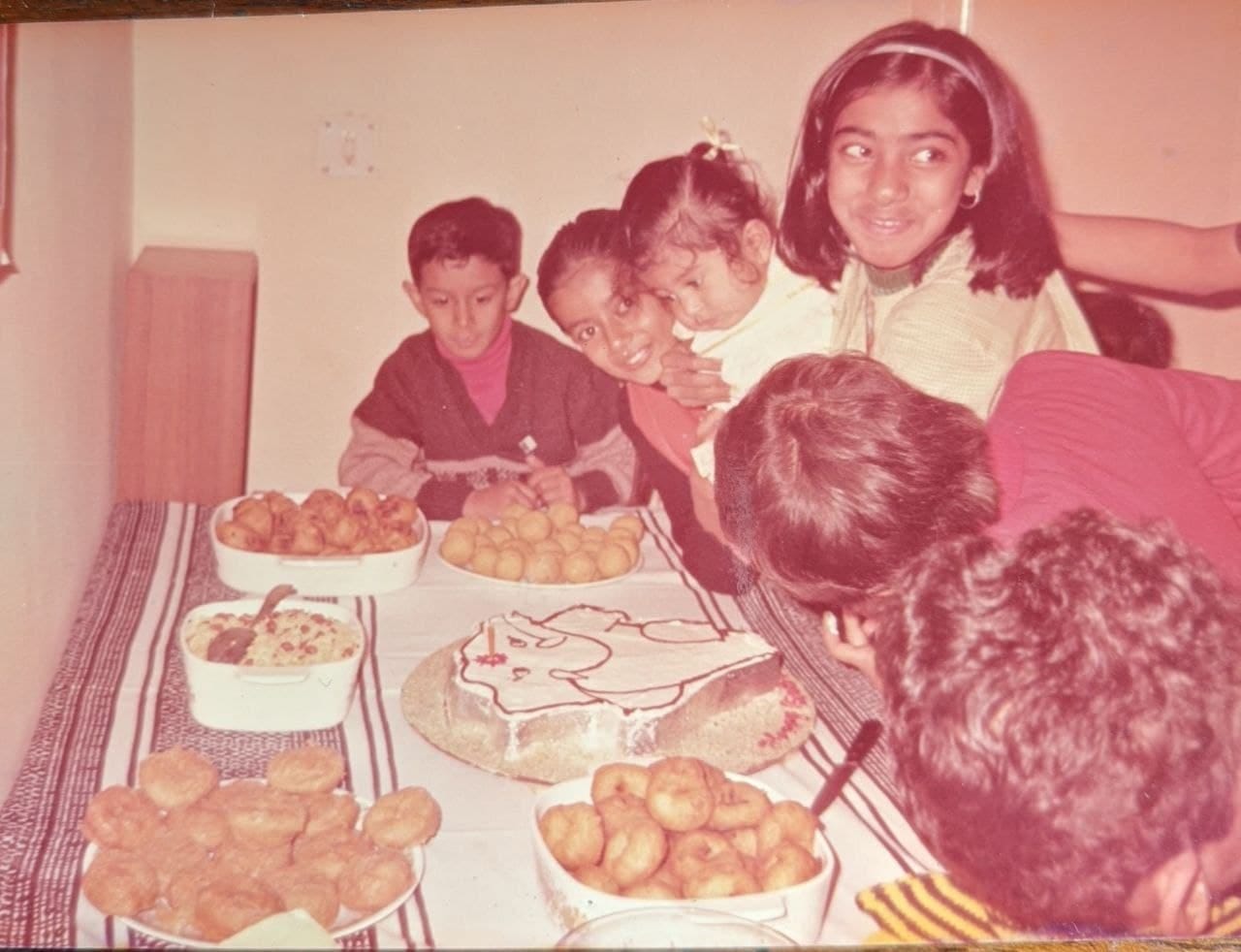
I’m not sure why “Appu” became equivalent with elephants. The correct Hindi word is “haathi” but “Haathi Ghar” doesn’t sound so friendly. Maybe there was a film? Either way, the elephant on one leg, almost dancing, his ears so symmetrical, his small eyes so friendly, became a mascot for my generation and the ‘80s in general. It probably has to do with our collective obsession with Ganesh. Ganesh, of all the Hindu pantheon, is the child’s god. He’s round tummied, loves to eat, and loves to play. You knew Ganesh, because he was everywhere you looked, posters, statues, stories, and so Appu was familiar. A non-divine version of an elephant we already loved.
Between Appu the mascot, the Asian games and Appu Ghar, the amusement park, the Sikh riots happened. I don’t remember this terrible chapter in Delhi’s history at all, but what I’ve been told is that I wept all day, inconsolable, while my parents tried to help out at relief camps. “Indira Gandhi died,” was all I would say, but why Indira Gandhi’s death affected me so is something that’s lost to time. (Many years later, I was on a train to Hyderabad with my grandmother when Rajiv Gandhi was assassinated. This I remember more clearly, because the train stopped for a full 24 or 48 hours because they were afraid of riots on the other end. When we finally got to Hyderabad, the India Today magazine with photos of the bomb blast hadn’t been put away yet and I looked through the ghoulish images, with the perverse cruel gusto of a ten year old. I remember particularly one photo of a disembodied leg, the foot still in its shoe.)
Appu Ghar was never a very modern place, even when it first opened. Part of the charm was being small and looking around yourself with wonder. There are four rides I particularly remember: perhaps because we always went on those? One was called My Fair Lady and there was this giant woman with a skirt that stuck out and you sat in seats along the hem of the skirt and she rotated, moving her body from side to side, so it was sort of like a swing and merry-go-round combined. Another was the aforementioned “Toofan Mail” which was a dragon-headed roller coaster that went at a thrillingly high speed and did one loop of its small cage. Thrilling that is, if you’re seven. Then there were the bumper cars, which were great and followed zero safety protocols, the seat belts were just a serving suggestion, so on one of those trips, I hit my head against the steering wheel and my nose began to spout blood in a tremendous and impressive manner, all over my (new) t-shirt and all the adults got very upset and my American-visiting aunt talked about suing for no seatbelt safety until just as suddenly, my nose ceased to erupt. They also had a haunted house, called comfortably colloquially “Bhoot Bangla.” A lot of the names of the rides were in Hindi, it was supposed to be an egalitarian place, with affordable and sometimes free rides, for anyone who wanted them.
Meanwhile, in the ‘90s, when cable television came to India, we started seeing ads for someplace that looked magic in Mumbai. It was also an amusement park, but not so down-home and friendly as Appu Ghar. This one was called Essel World, and was run by Zee and so had all that Bollywood glitz and glam. The ad, which I could probably still sing along to, had all sorts of characters enjoying their day at an amusement park. From a little boy holding his parents hands, to people in the water park, to a robot, an actual robot all saying they didn’t want to go home because now they lived at Essel World. Suddenly Appu Ghar started to look a little… shabby. Did you notice how the metal was crumbling on some of the rides? Did you notice how the lady spinning was beginning to look a little tired? Did you notice that the roller coaster wasn’t really a roller coaster, it just moved back and forth on a track shaped like the figure eight? It was always crowded, and we were turning into little snobs by then, we didn’t want to mingle, we wanted to stay exclusive. We wanted to counter our classmates Disneyland claims with something cool. Some of us had already been to America, gotten the Mickey Mouse ears, the whole slick Disney treatment, and now we began to be a little ashamed of Appu Ghar, when relatives came to visit, we’d apologise for it, we’d actively lobby to go somewhere else.
It tried to keep up. It introduced water park rides as well, but by then it was too late for us. Swim in the same water as everyone else, we said, turning up our noses, what a great way to get sick. Already modern Delhi was as divided as ancient Delhi before it, already the Appu mascot, once proud and belonging to everyone, was just a little too belonging to everyone. And so when Appu Ghar finally died, the version I knew anyway, we felt a bit guilty, but also we thought, “Ok, life goes on.” It was a nice place. Sweet even.
One last story: by the food court, there was a glass cage around a mechanical clown, his hands open, a plate of something on each hand. If you put a one rupee coin inside the slot, he’d come to life, rocking back and forth with disembodied laughter emerging from the tinny speaker attached to his cage. It was terrifying. I hated that clown, every time someone put money in him, I’d have to sit with my hands over my ears to block him out. But on one of my visits, I asked my mother for money and I marched over to that clown and I stuck my coin in the slot and I watched him defiantly, rocking back and forth, and I stared him straight in the eye, stared him down. The laughter still wasn’t pleasant, but I could see that his mechanism was old, that he was winding down. “I’m not scared anymore!” I reported, triumphantly, when I returned to our table. It might have been the last time in my childhood I would be scared of something like that, a moment had been crossed, some part of my imagination left behind forever. It might’ve been the last time we ever visited. I don’t know.
Obviously, let me know what you think of my alphabet idea. I’d love it if you were all, “Omg amazing” but you can also say, “No no horrible.” (If you say no no horrible, please provide alternate subjects to write about.)
I wrote a little internet poem also this week, inspired by the impeachment, which I thought was quite nice.
Links I Liked On The Internet This Week:
Doing my research for this newsletter, I came across this excellent interactive timeline of Delhi’s history which made me super nostalgic.
On being online.
My friend Nidhi Dutt makes amazing short films. Please watch this one about the COVID pallbearers. It moved me deeply.
How’s the guy who cashes in reward points to travel the world doing?
Her best friend was her secret stalker also reminded me of the crazy Nidhi Razdan story.
A year without (good) clothes.
You know about cave men but what was life like for the cave WOMAN?
Have a great week!
xx
m
Where am I? The Internet Personified! A mostly weekly collection of things I did/thought/read/saw that week.
Who are you? Meenakshi Reddy Madhavan, writer of internet words (and other things) author of seven books (support me by buying a book!) and general city-potter-er.
Follow me on Twitter, Facebook and Instagram. (Plus my book recommendation Instagram!)
Got sent this newsletter? Sign up here to subscribe!
Forward to your friends if you liked this and to the stuff you’re not ready to talk about yet if you didn’t.
Also, write back to me! I love to hear from you.



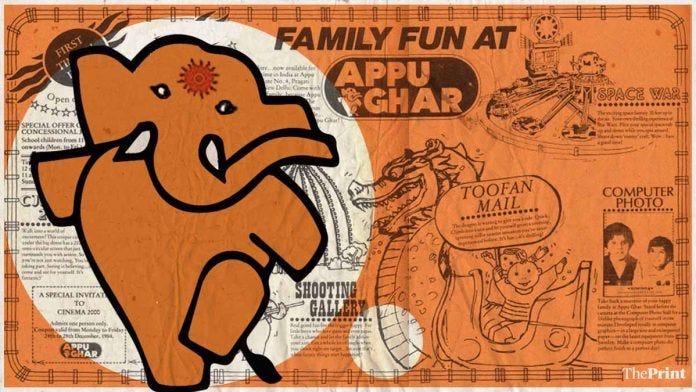
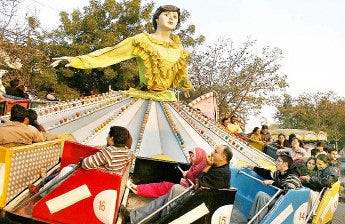
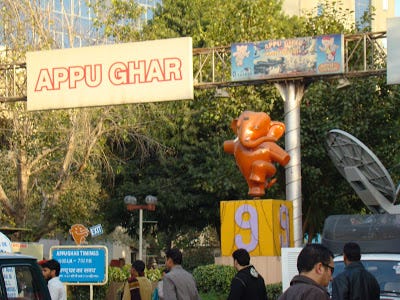
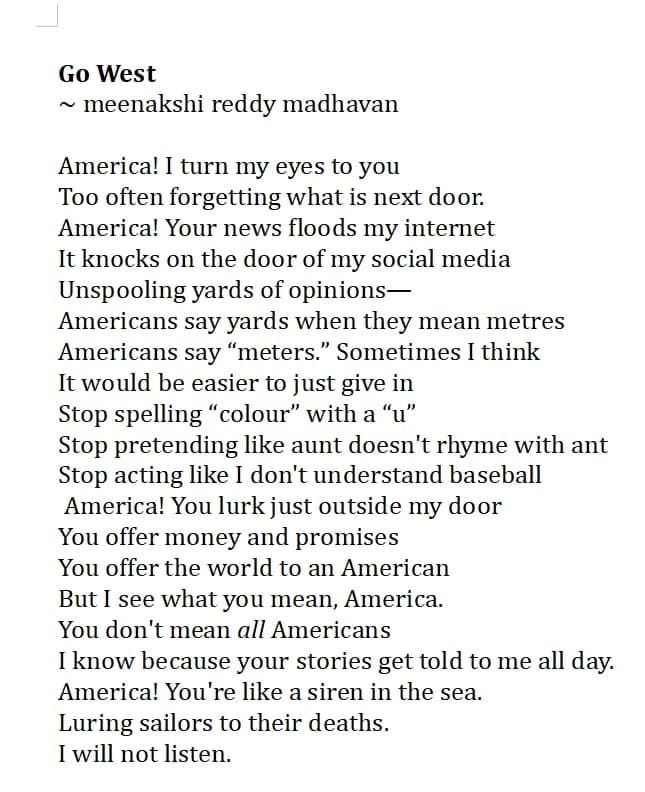
No comments:
Post a Comment
Thanks for your feedback! It'll be published once I approve it. Inflammatory/abusive comments will not be posted. Please play nice.